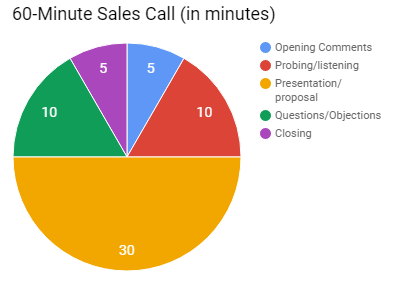Presentation Prep: Mitigating Mistake Risks
As you prepare for your next meeting, imagine that CNN will be there broadcasting it live. How does that make you feel? Nervous? Self-conscious?
Truth is, it shouldn’t matter. Facing your next meeting as if the whole world will see it let’s you take the bull by the horns: come what may, you are going to prevail regardless of any possible mistakes.
Of course, mistakes can happen and they come in many forms. So, what can you do to mitigate the risk of a presentation mistake happening? Here are a few things…
Six Ways to Avoid Presentation Mistakes
- Prepare for a Bigger Audience: The client says, “It will just be me at the meeting.” But then you get there and she’s brought along five others. Be calm…be flattered…and then step up to deliver because you were ready for this.
- Meet in a Conference Room: Look around your own office. How many distractions can you count? Even the photo of your family can make your mind wander. Request a conference room meeting. People know where your client’s office is but, probably won’t know what conference room he chose for your meeting. That means fewer interruptions. You have their full attention (if they can be convinced to put away their phone for 20 minutes!).
- You Set the Stage: I can’t begin to count the number of times I’ve rearranged a room in order to maintain control of the meeting. Often, there are too many chairs, the room is a mess, it’s too bright (or dark), there isn’t enough presentation space and so on. If there is a phone in the room, disconnect it! Dirty pool? No. You were promised full attention so, taking a phone call would break that promise. You will reconnect it after you’ve delivered your interruption-free presentation. The point is that you have arranged the room the way you want it and that will allow you to feel comfortable right from the start.
- Calm Your Movements: Too many times, I’ve witnessed people making exaggerated gestures, pacing too much and making other unnecessary movements. This conveys one thing: nerves. We’ve discussed the importance of practicing, so you shouldn’t be overly nervous, just excited. Stay calm and deliver.
- Be Neat: Prepare documents well and have them laid out, ready to distribute at the right time. Neatness counts…trite, but true. Control when the documents are distributed so that they don’t’ become a distraction to your presentation (ever had anyone skip ahead because they had the presentation in hand?).
- Use the Facilities: I know…you shouldn’t have to be told this like a parent to a 5-year old. However, so many times we are rushing to get to a meeting on time, we forget our biological needs until it is too late. That’s a distraction for sure! Scheduling time to use the facilities will ensure a) you get there early and b) you have some time to compose your thoughts in private, which is another way to bolster your confidence.
Mistakes Are Human…So Is Your Audience
You can’t avoid all mistakes, only mitigate the risks beforehand. But Murphy is always lurking and sometimes, the unexpected happens. When it happens to you, acknowledge it. I had a client who just before a meeting accidentally dipped his tie into a full cup of coffee. He made light of it with humor to acknowledge why he wasn’t wearing a tie, which got a positive reaction since everyone in the room had had something similar happen at least once in their careers. Now, everyone could move past that incident and not wonder for the next 30 minutes why he was tieless.
Prepare. Prepare. Prepare. If you follow the steps above and do your homework prior to the meeting, you have taken a big step towards mitigating the risks of mistakes. And that should give you the confidence to deliver the presentation in the way you hoped you would.
Oh…and one more tip…watch your coffee!
Which of these steps did you overlook in your last meeting? What was the result? Reply below. -sg


